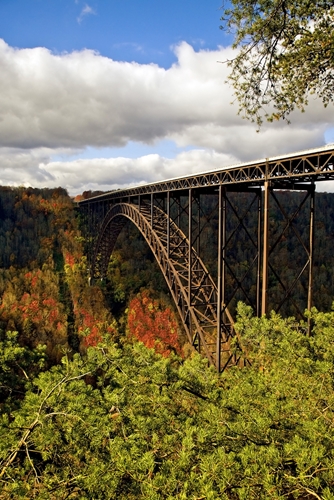Why preserving historic bridges with 3D modeling is important

3D laser scanning technology is often employed to help researchers and engineers preserve historic pieces of infrastructure by identifying issues within the structures of buildings and bridges and conserving the form of the structures in 3D models. By using the most accurate information on as-is conditions, engineers and various professionals can better understand the current state of these historic structures.
Yet, why is this work necessary?
Snapshots of the past
The answer to this issue differs depending on the person, but many people consider the preservation of historic structures to be essential for documenting the past and conserving the history of the community. According to the Oregon Department of Transportation, preserving historic bridges, in particular, is important for heritage tourism, which is financially beneficial to communities, and for aesthetics and culture. The ODOT notes that more than half of the nation's historic bridges have been lost within the past two decades, and many more are at risk of being demolished or are collapsing.
The Historic Bridge Foundation, a national advocacy organization, suggests that historic bridges also contain important information about when automobiles became popular in the area. According to the foundation, historic bridges are living history. They are able to be touched, measured and connected with in ways that differ from texts or photographs. Many of these bridges are still in use today, either as primary connectors between places or as gathering places for community members, such as during fishing season.
An ongoing education
In addition, historic bridges can provide clues about past building techniques, such as which building materials were common in certain eras, the foundation notes. According to The Associated Press, the Longfellow Bridge reconstruction project, whose primary purpose was to improve the historic Longfellow Bridge in Massachusetts, has given professionals in construction and engineering an education on how to rivet metal. Because the bridge's reconstruction costs are estimated to be $255 million, contractors had to ensure they were preserving it correctly. This led many to learn how to rivet, which is hard today.
"There are no specifications anymore that tell you how to rivet, so we make the best engineering judgment on how to do it," Mary Grieco, a metals control engineer for the Massachusetts Department of Transportation, told the AP.
For engineers and builders, having bridges around that they can study that were built using a specific technique can be an education that they wouldn't have otherwise been able to receive.
Saving historic bridges doesn't always work out, no matter how important it is to preserve these structures. However, with the help of 3D laser scanning technology and 3D modeling, researchers, engineers and architects can gain insight into what these bridges looked like – which can be valuable for educational and cultural preservation purposes.
Historic sites: Learn how SGM can bring cutting edge technology to bear on presenting your historic site to visitors in ways never before seen with our 3D imaging services.
